Meta Description: Acupressure has been practiced in China for thousands of years with the same principles as acupuncture to promote relaxation, wellbeing, and disease treatment. But what is acupressure exactly, and how does it work? Let’s see!
Acupressure is the practice of applying physical pressure to particular spots on the body, generally with your fingertips. According to traditional Chinese medical concepts, the invisible lines of energy known as meridians run throughout the body. Our organs are considered to be connected to other areas of the body via at least 14 meridians. These meridians are where acupuncture and acupressure sites are located.
If the flow of energy known as “chi” or “qi” is obstructed at any point along a meridian, it is considered to produce a variety of symptoms and health issues.
Throughout the session, acupressure therapy entails using a variety of finger motions on various acupoints to raise or disperse [pressure] at various points on the patient’s body. Its purpose is to assist the body in stimulating and activating its own natural healing energies. It can help people with headaches, migraines, joint pain, body discomfort, stiffness, anxiety, stress, acidity, and other digestive problems. Traditional Chinese doctors may also recommend the therapy “as a massage session or as a self-treatment for common pains and diseases.”
Physiological Effects
Acupressure massage has a wide range of physiological impacts on the human body. Increased capillarisation and cellular exchange are two physiological consequences of acupressure.
The expansion of capillaries in the blood flow is known as capillarisation. Capillarisation in the blood is stimulated by acupressure. After applying pressure to a localised location, acupressure induces capillarisation by stimulating a fresh upsurge of blood to that spot. Increased capillarisation can also boost oxygen delivery to the tissues.
Acupressure boosts soft tissue cellular exchange. The movement of cells in and out of tissues is known as a cellular exchange. Acupressure improves blood flow to a specific region, allowing oxygen and nutrients to replace metabolic wastes and toxins. In order to wash out harmful cells and maintain healthy tissues, cellular exchange is critical.
Major Acupressure Points
Acupressure massage treatment works to prevent sickness by stimulating and activating the body’s own healing energy. You may push on certain spots on the body to encourage energy flow to a portion of the body that is sick or in pain, allowing it to heal faster.
- ST 36 (Zu San Li): Locate the bony point beneath your kneecap, then move slightly outside the knee to locate a tiny depression. Stomach 36 is a remedy for indigestion, nausea, constipation, and other digestive problems.
- LI 4 (He Gu): Large Intestine 4, also known as the “great eliminator,” maybe massaged by applying pressure to the high point between your pointer finger and thumb. It’s one of the most well-known acupressure sites for migraines and headaches. It’s also considered to help women get pregnant.
- GB 20 (Feng Chi): For headaches, migraines, eye blurriness or weariness, insufficient energy, and cold/flu symptoms, this point is advised. Feel the mastoid (ear) bone and follow the groove back to where the neck muscles join o the skull to find it.
- GB 21 (Jian Jing): Gallbladder 21 is a well-known location for relieving stress-related neck and shoulder strain. It’s between your neck and the place where your arm joins your shoulder on the rear side of either shoulder.
- LV3 (Tai Chong): To find this spot, you need to remove your shoes. On the top of the foot, it is situated between the first and second metatarsals. You’ll see a tiny dip where the metatarsals meet if you run your finger down the area between the big toe and the second toe. This is a great area to stimulate stress, low back pain, high blood pressure, limb pain, sleeplessness, and emotional distress.
- Triple Energizer 3 (Zhong Zhu): This point, which is placed below the knuckles in the groove produced by the tendons of the fourth and fifth fingers, is widely utilised in the clinic for temporal headaches, shoulder and neck stress, and upper back discomfort.
- SP6 (San Yin Jiao): is placed on the rear of the shinbone, above the ankle (lower calf). It’s roughly four finger-widths above the inside of the ankle bone. Many urologic and pelvic diseases, as well as tiredness and sleeplessness, might benefit from this point. Pregnant women should avoid it.
- Yin Tang: Yin Tang is situated in the middle of the two brows, halfway between them. In other words, it’s between the brows, in the centre of the forehead, at the location where the “third eye” is commonly linked. The English translation of Yin Tang is “Hall of Impression,” which might be a reference to the intuitive “impressions” or inner visions that can be accessed at this site. Stress reduction and relaxation are claimed to be aided by light pressure on the spot.
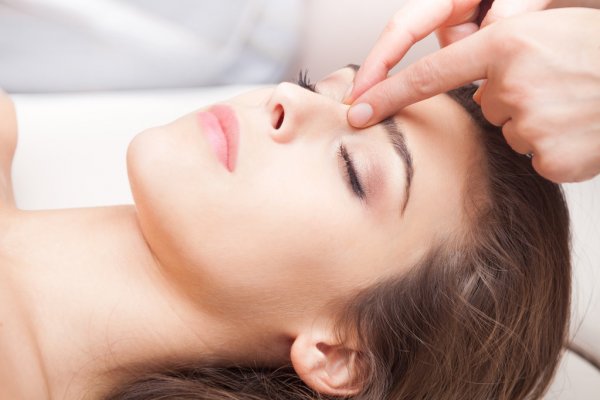
- PC 6 (Nei Guan): Pericardium 6 is a vein on the inside of the wrist that is used to treat nausea or motion sickness caused by pregnancy. Motion sickness bracelets stress this point. Its other use is called “calm the Shen”.
Benefits of Acupressure
It’s an alternative medicine approach based on the idea of life energy flowing through the body’s “meridians,” and it’s simply a way of delivering a signal to the body. When your body’s daily functions get obstructed or some biological processes become erratic, acupressure is intended to help. Consider acupressure as a helpful kind of stimulation for relieving muscular tension and ensuring long-term relief with minimal symptom recurrence. Physical pressure is used to remove blockages on particular areas throughout the therapy. It aids in the restoration of flow and the correction of functional imbalances, allowing the body to return to a more natural state of health.
The circulatory, lymphatic, and hormonal systems of the body are all stimulated by acupressure therapy. It relieves stress and anxiety, promotes sleep, relaxes muscles and joints, controls digestive problems, reduces headaches and migraines, and eases back pains and menstrual cramps. Positive acupressure benefits can be noticed after only one session or may require several, depending on the severity of your concern—it varies from case to case.
Acupressure enhances the body’s function, which benefits the skin and hair. The daily pressures of life decrease blood flow to the hair follicles and the scalp. Acupressure promotes hair development by stimulating blood circulation and bringing oxygen and fresh blood to the hair and scalp. It helps your skin by boosting your metabolism and relaxing your muscles while working on the pressure points.
Acupressure is a pain-relieving technique that can also aid in relaxation and sleep. It is regarded as very low-risk since, unlike other pharmaceutical therapies, it has no adverse effects or causes medication interactions. Many people, for example, have insomnia and wake up sluggish the next day if they use sleeping pills. Acupressure is a non-medicinal technique to wind down before bed. Acupressure is also regarded as a low-cost, handy therapy option because it may be self-administered. Acupressure has been shown to be particularly useful for seniors, many of whom suffer from chronic pain, anxiety, and despair. Acupressure is a technique that may be used to treat a variety of ailments, including:
- Stress reduction.
- Anxiety and agitation are reduced.
- Headaches and vertigo are relieved.
- Helps with better sleeping.
- Assists with pelvic or urinary issues.
- Blood pressure reduction.
- Get rid of nausea.
- Hormone balance improvement.
- Fear or irrational emotions can be alleviated.
- Aid weight loss for individuals with obesity.
Precautions With Acupressure
Acupressure is generally considered to be relatively safe. However, if you have cancer, arthritis, heart disease, or any chronic illness, talk to your doctor about any therapy that involves manipulating joints and muscles, such as acupressure. Additionally, confirm that your acupressure practitioner is licensed and certified.
If any of the following conditions apply, deep tissue treatment such as acupressure may need to be avoided:
- The therapy is for a malignant tumour or for cancer that has spread to the bones.
- You have rheumatoid arthritis, a spinal injury, or a bone illness that physical manipulation might aggravate.
- You suffer from varicose veins.
- You’re expecting a child (since some spots may trigger contractions)
Acupressure Mat
Acupressure is both safe and beneficial for self-care, and its treatment techniques require relaxing and calming yourself first by concentrating on your breath. For your self-care ritual, set a therapeutic desire. Massage and stimulate each point with deep, firm pressure or use a mat.
Acupressure mats are intended to counteract the effects of acupressure massage. Acupressure mats have hundreds of plastic points that provide pressure to the back’s acupressure spots. Acupressure pillows are also available for use on the neck, head, hands, and feet.
Procedure: It may take some time to become acclimated to acupressure mats. The spikes are sharp and might produce pain or discomfort for several minutes before warming up the body and feeling pleasant. Use the mat for 10 to 20 minutes each day to obtain the best benefits. Keep breathing and relax your muscles deliberately.
- Select a location for it to be placed on. You can put it out on a bed or sofa if you’re a beginner. Intermediate and advanced users should place their mats on the ground.
- You may also sit on or against the mat in a chair, making direct touch with your bottoms and lower back.
- Begin by putting a layer between yourself and the mat as a beginner. Wearing a light shirt or draping a thin cloth over the spikes may assist you in acclimating to the feel of the mat. You may obtain the best benefits when the mat comes into touch with your bare skin, but it’s okay not to remove your shirts straight away.
- Carefully lie down on the mat. Keep in mind to lie down on the mat with your weight evenly spread. This will assist you in preventing injuries from the points.
- Try to position yourself with caution. If you fidget or move around on the mat, you are more likely to puncture or scrape your skin. So be extra cautious while practising alone.
- Use the mat on a regular basis for better results. Acupressure mats require some getting used to, but they appear to perform well for a wide range of people.
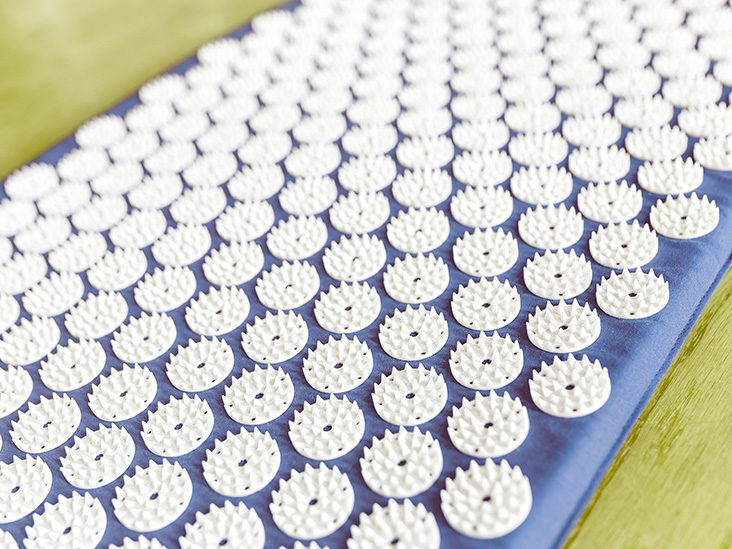
Issues to consider:
- Spikes on mats can puncture the skin, especially if they’re handled improperly. If you have thin skin, diabetes, or poor circulation, avoid using an acupressure mat to prevent sores or infection.
- The majority of acupressure mat producers advise against using them while pregnant.
- You should not use an acupressure mat to induce labour. Acupressure during labour should only be used under the guidance of a medical expert.
- Acupressure mats should not be used by babies, toddlers, or young children.
- Before usage, see your doctor if you have high or low blood pressure.
- Acupressure mats should not be used in place of medical therapy or medicine.
There are several misconceptions around acupressure, yet research supports this ancient treatment. For instance, acupressure has been proven to be as helpful as mental health therapy in mild to severe depression. Other trials have demonstrated its efficacy in the treatment of anxiety. It gives individuals the impression that they are in charge of their own health. It feels good to know that you’re helping to alleviate your problems.
Furthermore, learn strategies to utilise professionalism as acupressure massage therapists and gain accredited knowledge through step-by-step instruction by enrolling in this outstanding Acupressure Massage Training course.

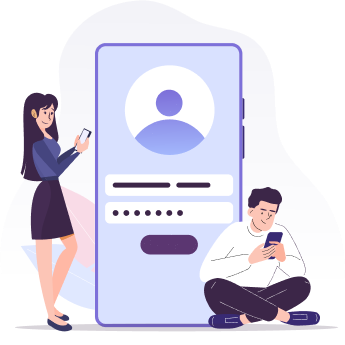

 " alt="20 Most Demand Mental Health Jobs and Ways to Success (With Salaries and Primary Duties)" />
" alt="20 Most Demand Mental Health Jobs and Ways to Success (With Salaries and Primary Duties)" />
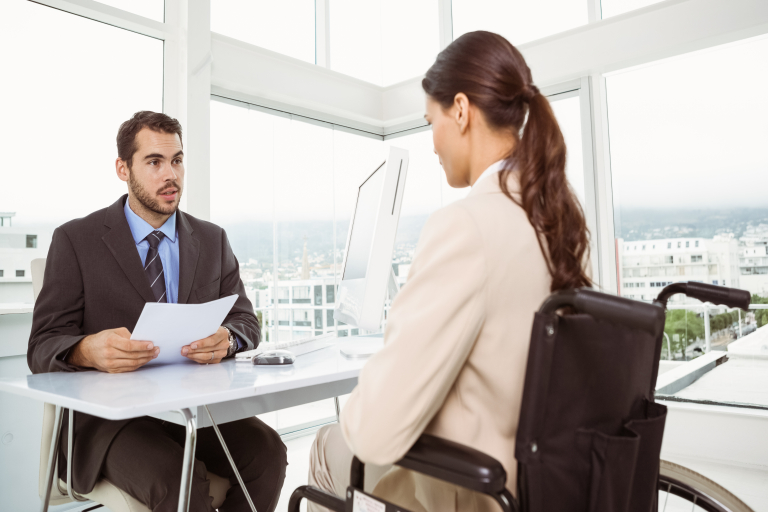 " alt="A Guide to Preparing for a Job Interview in 2025" />
" alt="A Guide to Preparing for a Job Interview in 2025" />
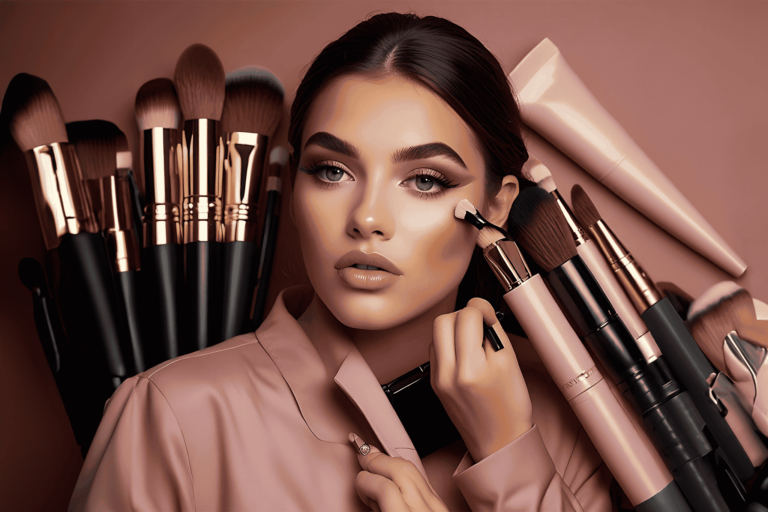 " alt="Makeup Artists to Follow This Autumn/Winter 2024" />
" alt="Makeup Artists to Follow This Autumn/Winter 2024" />